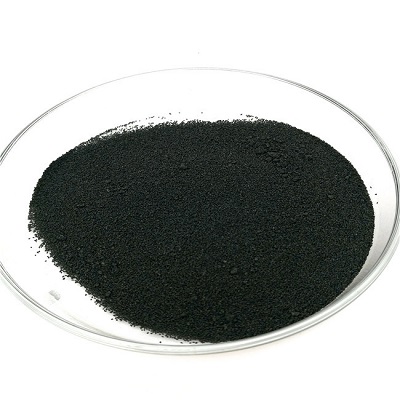|
Tungsten carbide is a dense, metal-like substance, light gray with a bluish tinge, that decomposes, rather than melts, at 2,600º C (4,700º F). Tungsten carbide has very high strength for a material so hard and rigid. Compressive strength is higher than virtually all melted and cast or forged metals and alloys; and is two to three times as rigid as steel and four to six times as rigid as cast iron and brass. High resistance to deformation and deflection is very valuable in those many applications where a combination of minimum deflection and good ultimate strength merits first consideration. For such a hard material with very high rigidity the impact resistance is high because it is in the range of hardened tool steels of lower hardness and compressive strength. It also performs well up to about 1000°F in oxidizing atmospheres and to 1500°F in non-oxidizing atmospheres; it undergoes no phase changes during heating and cooling, retains its stability indefinitely; and retains toughness and impact strength in the cryogenic temperature ranges. (-453°F.)
Tungsten carbide has exceptional resistance to galling and welding at the surface, and has sufficient resistance to corrosion-wear conditions for many applications. Tungsten carbide wears up to 100 times longer than steel in conditions including abrasion, erosion and galling. Wear resistance of tungsten carbide is better than that of wear-resistance tool steels. Uses
Industry Application Role/benefit
Mining Making mining tips, drill bits, and other cutting and mining tools Raw material/extreme hardness and resistance to wear and tear
Cutting and milling Manufacture of mill products and cutting tools for machining Raw material/extreme hardness, resistance to high temperature and good formability
Jewelry Crafting rings, pendants, earrings and other jewelry Raw material/extreme hardness and high resistance to scratching
Medicine Manufacture of surgical instruments Raw material/extreme hardness and high resistance to pitting and rusting
Ammunition Armor-piercing ammunition Raw material/combination of great hardness and very high density
Nuclear Neutron reflector Reflector material
Sports Tips of ski pole Raw material/increase resistance to wear and service life
Drive tracks of snowmobiles and motorcycle and bicycle tires
Farriery and shoes sole
Catalyst Production of water from hydrogen and oxygen at room temperature Replacement of platinum
Reduction of tungsten trioxide by hydrogen in the presence of water
Isomerization of 2,2-dimethylpropane to 2-methylbutane
Hydrazine-powered satellite thrusters Replacement of iridium
Others Rotating ball in the tips of ballpoint pens Extreme hardness and resistance to wear
Manufacture of gauge blocks Common material
Guitar slide Superior sustain and volume than other material slides
Catalytic and fuel cells Electrode material
Light bulb filaments Essential component/high temperature resistance and considerable period of using time
SEM probe and field emission electric device High resolution and good oxidation resistance Preparation Tungsten carbide is prepared by heating powdered tungsten with carbon black in the presence of hydrogen at 1,400º1,600º C (2,550º-2,900º F). For fabrication, a process developed in the 1920s is employed: the powdered tungsten carbide is mixed with another powdered metal, usually cobalt, and pressed into the desired shape, then heated to temperatures of 1,400º-1,600º C; the other metal, which melts, wets and partially dissolves the grains of tungsten carbide, thus acting as a binder or cement. The cemented composites of tungsten carbide-cobalt are known by many different trade names, including Widia and Carboloy. Chemical PropertiesGray powder. Mohs hardness of 9+ in solid form. Insoluble in water but readily attacked by a nitric acid– hydrofluoric acidmixture. Stable to 400C with chlorine, burns in fluorine at room temperature, oxidizes on heating in air. Physical propertiesGray powder, dissolved by HF=HNO3 mixture. Cutting tools, wear-resistant semiconductor film. Corroded by molten metals Mg, Al, V, Cr, Mn, Ni, Cu, Zn, Nb, and Mo. Corrosion resistant to molten Sn and Ta. UsesTungsten carbide is extremely hard and are excellent cutting materials. It is used extensivly in the tool and die industry for drilling and cutting tools, sand blasting nozzels, armor-piercing bullets, and studs to increase traction of tires. Tungsten carbide is extensively used as a cutting tool for machining and in armor-piercing ammunition. It is also used in farriery, the shoeing of horses as well as to improve traction on slippery surfaces like roads or ice. It finds application in nuclear reactors as an effective neutron reflector. It is also used for making surgical instruments meant for open surgery such as scissors, forceps, hemostats, blade-handles and in laparoscopic surgery instruments such as graspers, cutter, needle holder and cautery. Further, it also used to make the rotating ball in the tips of ballpoint pens, bridal jewelry, and gauge blocks, which is useful for producing precision lengths in dimensional metrology. UsesTungsten Carbide/Carbon (WC/C) is a black-gray colored coating of hard tungsten carbide particles in a soft amorphous carbon matrix. It is used for precision components with abrasive and adhesive wear, seizure problems (poor lubrication) and for dry machining applications. DefinitionA black powder,WC, made by heating powderedtungsten metal with lamp black at1600°C. It is extremely hard (9.5 onMohs’ scale) and is used in dies andcutting tools. A ditungsten carbide,W2C, also exists. DefinitionA ditungsten carbide, W2C, with similar physical properties is also known. WC is said to be the strongest of all structural materials. HazardToxic by inhalation. Flammability and ExplosibilityNot classified Industrial usesTungsten carbide with a 3 to 20% matrix ofcobalt is the most common structural RHM. Thelow-cobalt grades are used for applicationsrequiring wear resistance; the high-cobalt gradesserve where impact resistance is required. Safety ProfileChronic inhalation causes lung damage in humans. Ignites at 600°C in nitrogen oxide atmospheres. Violent reaction with F2, ClF3, NOx, IF5, PbO2, NO2, N20. See also TUNGSTEN COMPOUNDS. Toxics Screening LevelThe initial threshold screening level (ITSL) for pure tungsten carbide is 50 μg/m 3 based on an 8 hour averaging time. (责任编辑:) |

